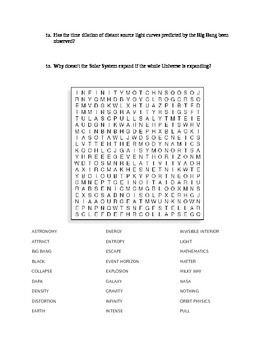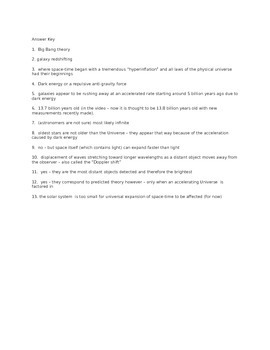Astronomy Video "How the Universe Works: Big Bang"
- Word Document File
Description
The episode link to YouTube is provided in the title if the video is not available on DVD. Excellent series that was on the Discovery Channel and is now on the Science Channel.
This worksheet is on episode #1 and explains the Big Bang Theory on the origin of the Universe (47:27). The latest graphics and explanations are used to help students understand a complex and abstract subject. 13 questions (not in any order) can be answered while watching the video or as an Internet activity. A puzzle activity and an answer key is also included.
Key words/concepts include:
Big Bang Theory
universal models
anti-gravity
cosmological constant
universe expansion
universe acceleration
Albert Einstein
oldest stars
redshift
quasars
time dilation
astronomydad
Astronomy Video "How the Universe Works: the Big Bang" by astronomydad is licensed under a Creative Commons Attribution 3.0 Unported License.




